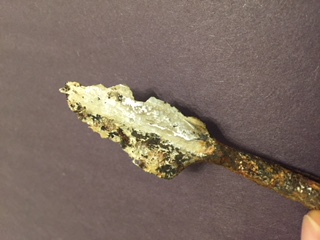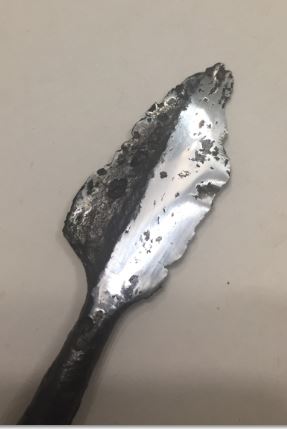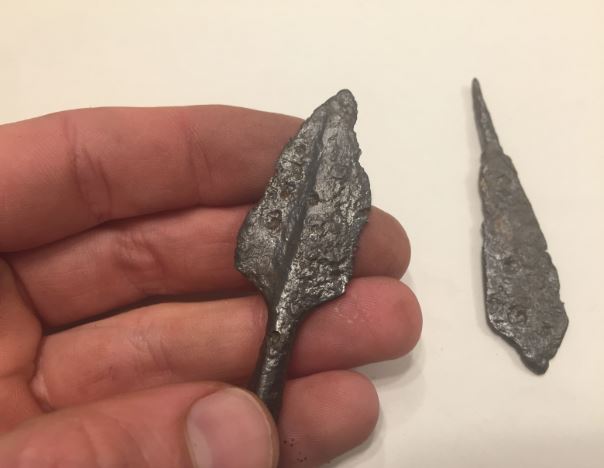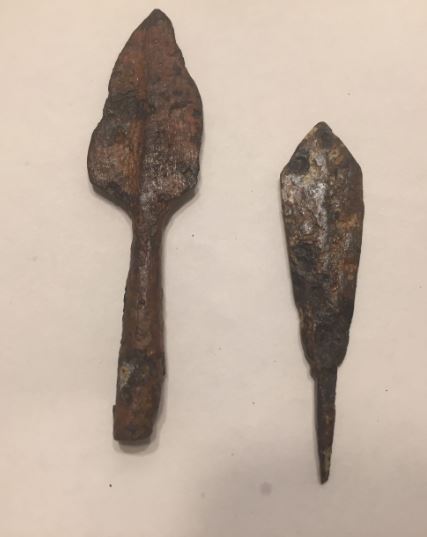In the past few years I have seen a number of swords come up for sale in various locations that are in excavated condition. Every time I see a sword like this I am skeptical. Sometimes these blades are obvious poorly done fakes, but sometimes, the form, proportions, and assembly style appear to be authentic. Below are some examples from pictures that I have saved. Each of these to me appear like they could conceivably be authentic based on their form and constriction. Things that I find potentially suspect are the patina, and possibly the lack of grain that I would expect from a corroded item made from wrought iron (hilt parts), or steel from derived from bloomery iron. That being said, I have seen many authentic excavated swords with very similar patina, and a similar lack of visible grain. I have even personally polished and etched an ancient arrowhead with a very similar corrosion patter to these blades and found that it had a strong pattern and grain direction consistent with bloomery iron that was not visible prior. This leaves me with the question: How can items like these be authenticated? I would love to hear your thoughts.
[ Download ]
[ Download ]
[ Download ]
[ Download ]
[ Download ]
[ Download ]
[ Download ]
[ Download ]
[ Download ]




